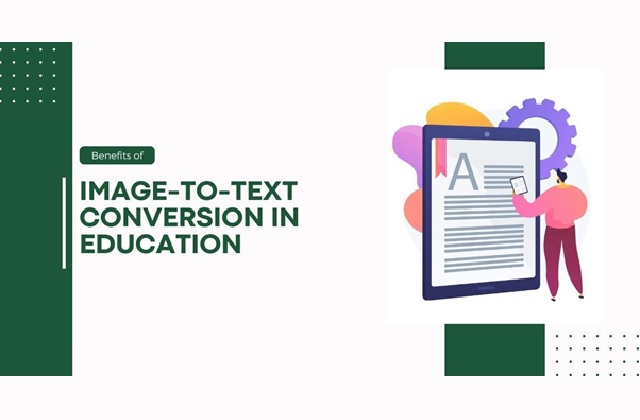
Including graphics in any text or content improves understanding and quality. As a result, visual comprehension of content improves. This is a time of visual displays and demonstrations.
More information is now available in the form of videos and photographs. Images provide an array of data and information. Text must be extracted from images in order to use that important information.
This process provides several educational benefits. Let’s look at some of the most important benefits of image-to-text conversion in education.
What is OCR, and How is it Related to image-to-text Technology?
OCR is the primary technology that extracts text from images using complex algorithms. The operation of OCR technology is based on artificial intelligence. It is capable of characters printed on photographs and remembering their position. Teachers and students in education frequently need to convert image to text in order to create documents.
Optical Character Recognition (OCR) is used in image-to-text technology. Using complex algorithms, OCR analyzes an image and recognizes the words and characters included within it. This enables OCR to recognize and extract text from images.
When you receive the text, you can treat it as plain text and use it in a variety of applications. In the last several years, image-to-text conversion has come a long way. There are now OCR-based technologies that can recognize text written on real-world items.
Key Advantages of image-to-text Conversion in the Education Field
1. Save Time
Rather than wasting time reading unclear and hazy writing, one can save time and energy by adopting such technologies. For students as well as teachers, time is a vital resource. Saving time is one of the major benefits of image-to-text conversion in education.
Students are completing research theses and projects. They require a large amount of data collection, which wastes a lot of time. Because they need articles and PDF files that they were not even allowed to access or download. In such cases, these tools help them save time and energy.
Students quickly copy any text from a scanned PDF file and use its text in our content. These text extractor programs may quickly transform blurred screen images into text.
Various time-consuming operations can be reduced and made more effective by transforming images into editable and searchable text.
2. Simplifies the data
Data is important in many sectors, including education. However, working with and analyzing data in the form of images can be difficult.
This is where image-to-text conversion comes in, simplifying data handling by transforming text-filled photographs into editable and searchable text format.
Text extractors of this type simplify data. Data imprinted on photographs might become hazy and indistinct at times. Thus, data can be turned into text with a single click, simplifying the process. These technologies make it easier to read data that is sometimes difficult to understand, such as that written on roadside signs or in captcha codes.
Text from images might often be difficult to read due to their low resolution. So, with the help of these tools, even low-resolution texts can be read. In this way, text extractors or image-to-text technologies make academic life easier for students.
3. Removes the language barrier
Language obstacles can be overcome with the help of these technologies. Because not all information is available in the English language. The fact that so much relevant material is produced and stored in other languages is a significant challenge for researchers and content creators.
These tools are now simple to use, even on cell phones. As we enter the smartphone era, cellphones are used not only to connect people but also as minicomputers. Students can quickly snap screenshots of any image and convert it to text using image-to-text converters with the help of these tools.
These programmes can simply recognise text in various languages and convert it to the language we choose. In this regard, it’s an excellent resource for overcoming the language barrier. With a single click, data captured in another language is translated and text extracted, even on a window.
4. Enhanced accessibility and research
Image-to-text converters can considerably improve the accessibility of learning materials for students with visual impairments or reading challenges.
By transforming picture text into machine-encoded text. Students can use these technologies to access the same content as their peers and read it using assistive technology like screen readers.
AI image-to-text tools can also help students with their studies. By transforming image text into machine-encoded text. Students can simply take quotes and important information from sources and organize them digitally for future reference.
4. Organize study materials
Students must organize their study resources in order to easily obtain the information they require. A well-structured and organized set of notes can help students keep on top of their work.
Image-to-text converters can be an extremely useful tool for students when it comes to organizing their study materials. Students can use this technology to swiftly transform images or other resources into text documents. The documents can then be easily updated, reordered, and shared.
Wrapping Up
Converting images to text simplifies data in education by increasing accessibility and searchability. This approach ensures that textual information included within photographs can be easily used for educational study. Image-to-text conversion enables educators and researchers to fully utilize data by simplifying data processing. They can improve efficiency by allowing students to share material with others and save notes. They also allow people with visual impairments to access. They give students more time to concentrate on learning. Overall, they provide students with an excellent approach to boosting their academic performance.
Also Read: